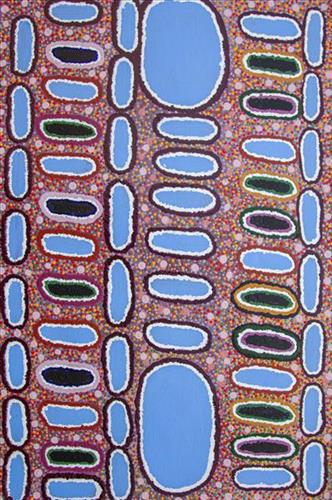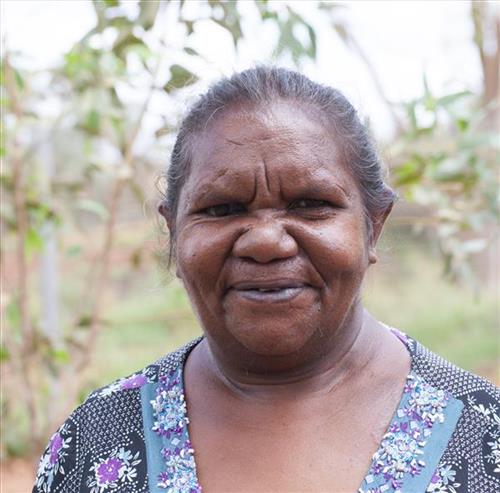111582122450
Dreaming of the Kapi (water)
“This one here is a story form the Old Man [Wokka Taylor (dec.)]. It’s a story about bringing the kapi (water, rain). He told me this story, for me to tell now he’s gone. It was last year [2021], here in Parnngurr. We were sitting down in the ngurra (home), in the camp, and that old man he was singing, singing. Sitting down softly singing. I said, “hey Old Man, why you singing out there? For the kids?” You know I thought he was singing for the kids, to make them feel happy, make them laugh. Playing around [laughs]. But he said “No, I’m singing out for the kapi. Singing out for these clouds. Make him rain.” You know- fill up all the waterholes look after the Country. He was a Rain Maker that old fella, he knew this Country, could ask for the rains to come, fill everything up. Yeah, I’m painting this one here now for him, now he’s gone. Keep his stories going. Keep the kapi coming.”
– Emily Bumba, Parnngur 2022
Depicted in this work are sources of kapi (water) within the artists’ ngurra (home Country, camp), typically represented with circular forms. During the pujiman (traditional, desert dwelling) period, knowledge of water sources was critical for survival, and today Martu Country is still defined in terms of the location and type of water. Each of the hundreds of claypans, rockholes, waterholes, soaks and springs found in the Martu desert homelands is known through real life experience and the recounting of Jukurrpa (Dreaming) narratives by name, location, quality and seasonal availability. This encyclopedic knowledge extends even to the nature and movement of arterial waterways, and sustained Martu as they travelled across their Country, hunting and gathering, visiting family, and fulfilling ceremonial obligations. They would traverse very large distances annually, visiting specific areas in the dry and wet season depending on the availability of water and the corresponding cycles of plant and animal life on which hunting and gathering bush tucker was reliant.




